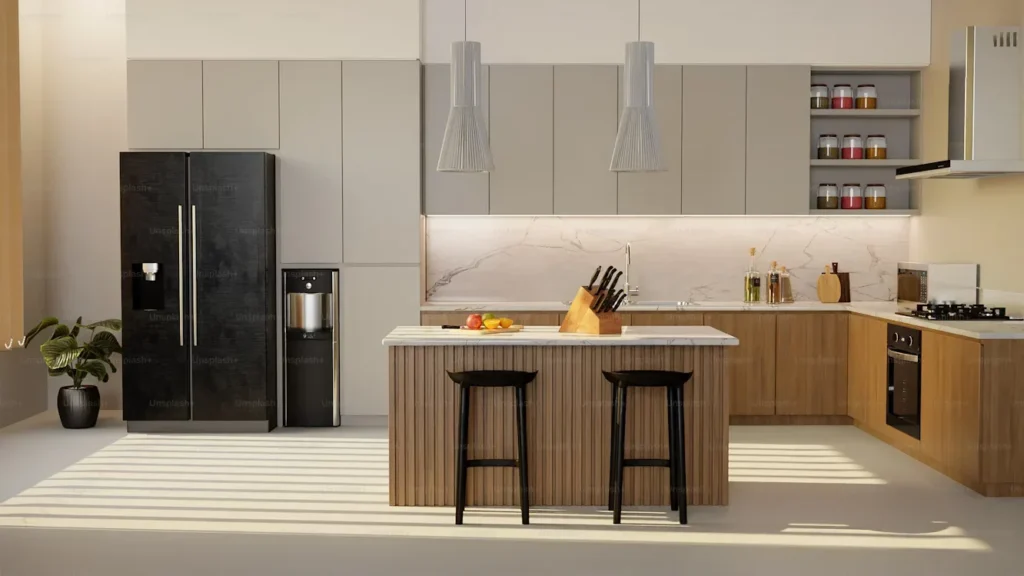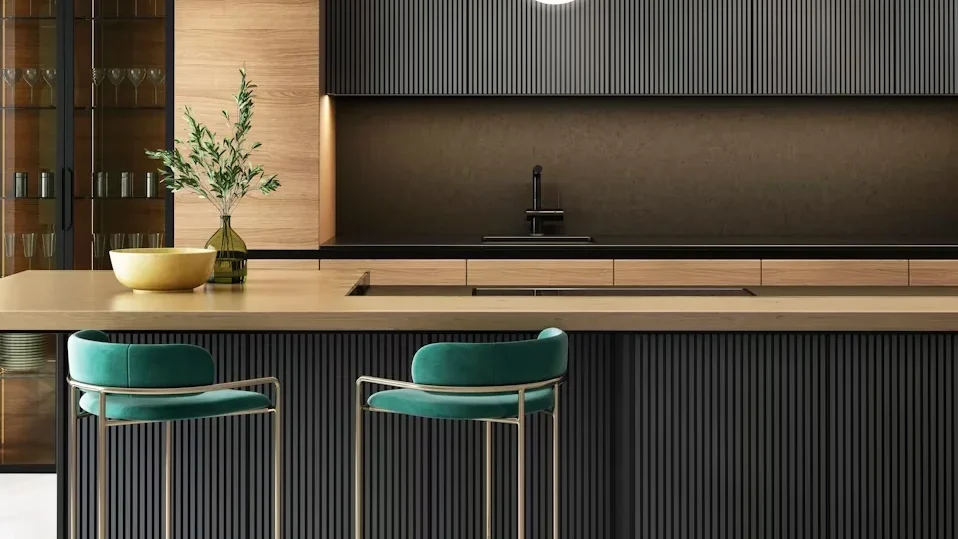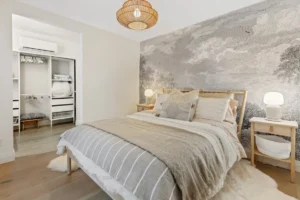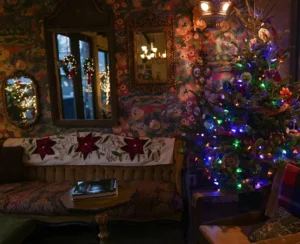There is no denying the attractions of Alaska’s stunning vistas, snow-capped peaks, vast forests, and expansive coastlines. The state’s unspoiled grandeur and rugged landscape have long been an inspiration, driven by a singular design philosophy that venerates nature and marries it with practicality. In Alaska, a kitchen is not simply a room to prepare a meal but also an opportunity to represent the land’s natural beauty and rawness. Like each dish, a well-designed Alaskan kitchen effortlessly combines elements of rustic and sustainable from counters to floorboards, resulting in an industrial-chic ode to the great state’s natural beauty.
Incorporating Natural Materials

When creating a kitchen that mirrors Alaska’s beautiful outdoors, it is all about the material selections. This is Alaska, where nature reigns supreme, and that should be reflected in the pieces used in a home. Wood, stone, and metal are essential materials that are used to help the outside make its way in.
For example, swaths of reclaimed pine or birch add a gorgeous look to cabinetry and shelving, as rich, warm woods native to the area. These woods are warming while still celebrating Alaska’s forests. Its authentic grain adds texture, personality, and warmth to your space, creating an ambiance brimming with rustic elegance. If you want to give it a more rugged vibe, use some weathered lumber from downed trees for an earthy, grounded feel.
Stone elements, such as granite or slate, are also vital in bringing the feel of the Alaskan wilderness indoors. These materials work well for countertops, backsplashes, or even flooring. Stone not only provides durability but also reflects the rugged, enduring quality of the Alaskan landscape. It’s cool, natural hues, gray, brown, and earthy tones, can complement the rich, warm woods used in the kitchen. The addition of artisan metalwork, particularly copper, can instantly elevate the space; high-quality pieces like those made by CopperSmith bring an unmatched blend of craftsmanship and natural texture to the kitchen’s design.
Functional Design with a Rustic Twist
In Alaskan kitchens, function is often valued as much as form. We can thrive like fish in the water, or we can turn a deaf ear to it and flounder. “Our environment calls for practicality, sustainable longevity, and should be no exception, as described with implications, i.e., “crinkled” concentrations (p. 248). Such a charming kitchen evokes the luxury of an upscale farmhouse on the range, designed for everyday use and adorned with classic features throughout.
One such thing that has both utility and appeal is a farmhouse kitchen sink. Not only are these big, apron-front sinks great for washing giant pots and pans and as prep sinks, but they also serve as workhorses around the kitchen. Farmhouse sinks are either hammered or smooth copper finished, providing an artisan touch that harmonizes with the room’s organic feel. At the same time, they are durable enough even to withstand daily use. This contrast of texture, when combined with a wooden countertop or stone backsplash, for example, pairs nicely with such natural finishes and makes an attractive match. For instance, CopperSmith supplies beautiful farmhouse kitchen sinks of exceptional quality.
Integrating Alaskan Wildlife and Nature into the Space

In addition to materials, another key aspect of designing a kitchen that mirrors Alaska’s natural beauty is incorporating elements that connect to local wildlife and natural features. Whether it’s the deep blue of glacial waters, the shimmering white of snow, or the evergreen forests, nature’s colors and textures can be reflected in the design.
For instance, blues, greens, and silvers can conjure images of Alaska’s icy rivers and the deep pine forests that blanket the state. These colors look great on cabinetry, tile, or in smaller doses such as dishware and accessories. You can also mix in natural textures like fur throws, woven basket,s or stoneware to give off that “I’m out in the Alaskan wilderness” vibe while creating a more cozy and warm atmosphere for your kitchen.
Using local art is another way to bring a bit of Alaska into your kitchen. Wood-carved pieces, wildlife prints, and northern lights-inspired paintings can be strategically placed around the kitchen to add character and life to the decor. These artistic elements not only ground the space in Alaska’s excellent habitat but also bestow the kitchen with an Alaskan character.
Read More: Why Custom Cabinet Hinges Are a Game Changer for Unique Furniture Designs
Sustainable Practices and Eco-Friendly Materials
Alaska’s inhabitants have always revered nature, and this is evident in the way most Alaskan houses are built. A green kitchen uses eco-friendly materials and practices that respect the land, ultimately reducing waste. This is especially critical in Alaska, with its pristine and delicate environment.
Repurposed or upcycled materials are perfect for an eco-friendly kitchen. Reclaimed timber, for example, provides a rustic look and a tempered use of new wood. Sustainable stone, such as soapstone or recycled glass countertops, adds beauty and durability in an environmentally conscious way. And energy-efficient appliances, low-flow faucets, and water-saving fixtures reduce the home’s environmental impact.
Creating the Ultimate Alaskan Kitchen
A kitchen that reflects Alaska’s natural beauty is more than just a cooking space; it is a place to gather, celebrate, and connect with nature. By using natural, sustainable materials, incorporating rustic designs, and adding personal touches that reflect Alaska’s unique landscapes, homeowners can create a kitchen that is both functional and breathtaking. The integration of farmhouse kitchen sinks, crafted with care and artistry, can bring this vision to life, creating a space that truly embodies Alaska’s wild beauty.
When designing a kitchen in Alaska, it’s about honoring the environment, embracing functionality, and celebrating the incredible natural beauty that surrounds us. With thoughtful design choices, you can create a kitchen that feels both timeless and rooted in the heart of the Alaskan wilderness.












